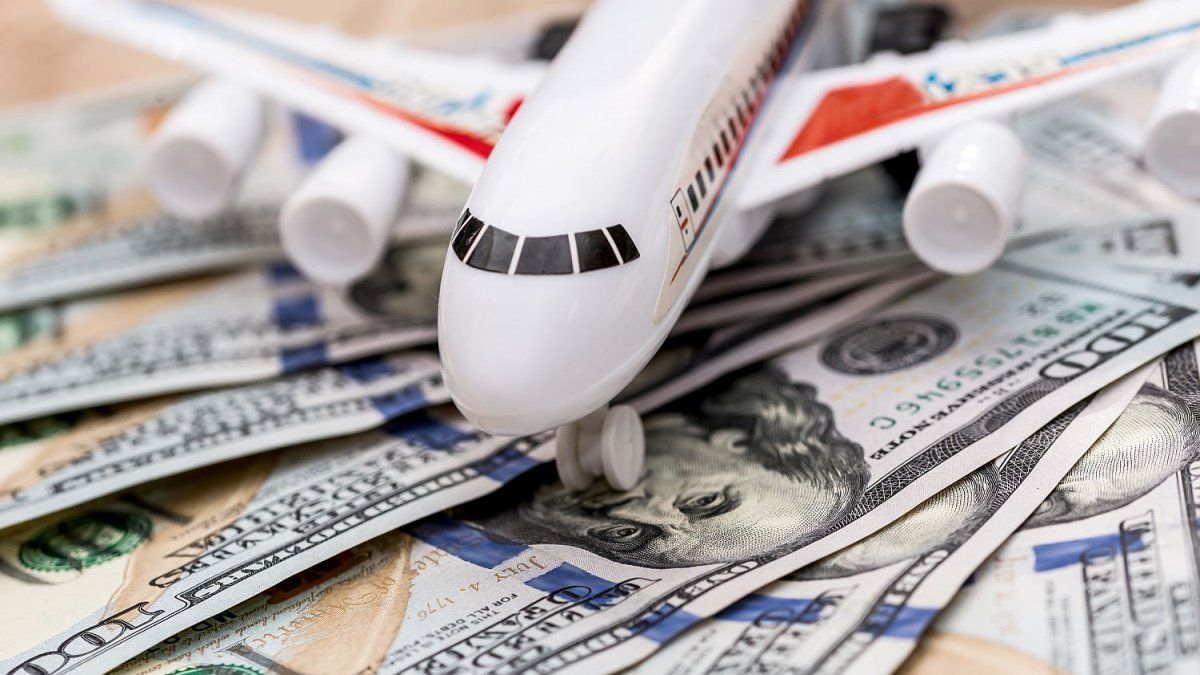Many Argentines are in the midst of planning to travel abroad, but a key question arises: what is the most convenient exchange rate? In this note, we explore the different alternatives available.
With a dollar that is perceived as “cheap” for those planning their vacations in 2025, many Argentines are considering the possibility of traveling abroad. During the recent Cyber Monday, many took the opportunity to buy tourist packages, with Rio de Janeiro standing out as the most chosen destination. Other popular destinations were Santiago de Chile and Madrid. This is the ideal time to evaluate payment options to cover expenses once abroad and determine which is the most convenient alternative.
The content you want to access is exclusive to subscribers.
- If you pay with a credit or debit card, the bank counts the exchange rate (“tourist dollar”), which is above $1,620. This value is much higher than free dollars (blue or MEP).
- Paying with the MEP dollar is the best option so far because that exchange rate is at $1,121 while the blue is at $1,140. As the gap between the two is small, the distinction will be between whether you prefer to have the cash in hand or directly in the bank, and pay all expenses with the dollars purchased.
How much do dollars cost to leave the country?
Outside Argentina, if expenses are paid with a debit card associated with an account in pesosthe applicable exchange rate is the “tourist dollar”, which includes the official retail dollar (around $1,020 according to Banco Nación), plus 30% of the PAIS Tax and another 30% collection on account of the Income Tax . In total, The tourist dollar has a 60% surchargeand its value continues to increase due to the daily depreciation of the official dollar. This is the same exchange rate applied to the purchase of the US$200 of “savings dollar”, although this option is currently not convenient and almost no one uses it.


On the other handif you choose to purchase blue dollars or MEP with pesos, The exchange rate is between $1,125 and $1,140 in November, which represents a approximate savings of 40% (about $500 per dollar) against the tourist dollar. This is valid both for expenses made abroad in person and for online purchases of services such as accommodation, car rental or excursions. However, in the case of tickets, the calculation differs, since taxes are not applied to the final price, and the savings are lower compared to other purchases.
Options to pay abroad:
- Pay in cash with dollars or local currency.
- Use a debit card linked to a dollar account.
- Make the payment by credit card and then settle the statement in dollars.
Each option may reflect a slightly different exchange rate as quotes may vary depending on the day payment is applied. It is not necessary to opt for a single alternative, since the different options can be combined for greater flexibility.
In any case, there are no financing options (except for the small margin of days when using a credit card), so it is necessary to have the dollars available at the time of making the payment.
dollar-tourist-tourism.jpg

Paying with dollars to avoid tax surcharges is the best option
Depositphotos
How to pay by debit with dollars in account
If you want to avoid carrying large amounts of dollars in cash (although it is always useful to carry some) and then exchange them into the local currency, one of the most practical options is to use a debit card.
To avoid the tourist dollar surcharge (which currently exceeds $1,630), it is necessary that the debit card be linked to a dollar account.
It is important to consider two aspects:
-
The dollar account must have sufficient funds; Otherwise, the debit will be made from the account in pesos.
-
Before traveling, it is advisable to select the dollar account as the main one for payments abroad. Each bank has its own procedure to configure this, although in general it can be done through Homebanking or the entity’s app. Some banks activate this option automatically, but it is advisable to check before traveling.
Applicable exchange rate: If purchases are made in dollars, the amount will be debited in the same currency. If payments are in other currencies (such as reais, euros, Chilean or Uruguayan pesos), the transaction is converted to dollars at the exchange rate in effect on the day of purchase.
How to pay with a credit card in dollars
Another practical alternative to avoid using cash is the credit card, since it is not necessary to have dollars at the time of purchase. When the summary arrives, You can choose to pay it in dollars, thus avoiding payment in pesos.
Applicable exchange rate: Purchases in other currencies are converted to dollars at the exchange rate on the day of purchase. For the payment of the summary, the amount will be shown in dollars and pesos, with 30% PAIS Tax and 30% collection (RG 4815) applied to the official exchange rate of Banco Nación at the time of closing. Stamp taxes will also be added, which vary by province.
To pay in dollars (a more convenient option), It is necessary to pay the statement in dollars before its expiration and request a “stop debit” to avoid automatic debit in pesos. It is essential to pay the full amount in dollars, deducting the PAIS Tax and the payment from the amount in pesos.
Source: Ambito
I am Pierce Boyd, a driven and ambitious professional working in the news industry. I have been writing for 24 Hours Worlds for over five years, specializing in sports section coverage. During my tenure at the publication, I have built an impressive portfolio of articles that has earned me a reputation as an experienced journalist and content creator.




